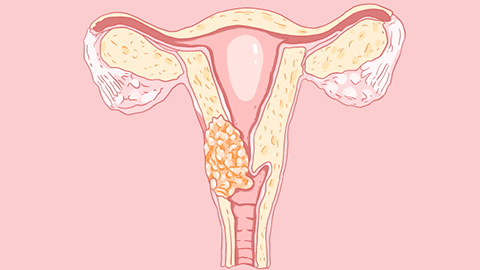How is cervical erosion caused?
Cervical erosion, also known as cervical columnar epithelial displacement, may be caused by changes in estrogen levels, physiological phenomena during puberty, physical injury, chronic cervicitis, or cervical intraepithelial neoplasia. If abnormalities occur, timely medical consultation is recommended. Detailed analysis is as follows:

1. Fluctuations in estrogen levels: Cyclical changes in a woman's estrogen levels can cause the columnar epithelium inside the cervical canal to shift outward to the vaginal portion of the cervix, creating an appearance similar to erosion. This is a normal physiological change. The condition may resolve spontaneously with changes in estrogen levels and generally does not require intervention.
2. Physiological phenomenon during puberty: In adolescent females, ovarian function gradually matures and estrogen secretion increases, promoting outward expansion of the cervical columnar epithelium, resulting in an appearance similar to erosion. This is a normal phenomenon during pubertal development, typically does not cause discomfort, and requires no special treatment.
3. Physical injury
This includes childbirth and induced abortion procedures. During vaginal delivery, the cervix may sustain some degree of injury as the baby passes through the birth canal. Additionally, medical instruments used during induced abortion can cause cervical damage. If sterilization procedures are not strictly followed during surgery or postoperative care is neglected, infections may easily occur, leading to cervical columnar epithelial displacement. Proper personal care and attention to hygiene can help alleviate symptoms.
4. Chronic cervicitis: Persistent infection of the cervix by pathogens causes inflammation, leading to damage, congestion, and edema of the cervical mucosa, resulting in symptoms resembling erosion. These symptoms are often accompanied by increased vaginal discharge, yellowish discharge, odor, and postcoital bleeding. Treatment may include the use of Fuke Kang suppositories, Kanggongyan tablets, or Policresulen vaginal suppositories, as directed by a physician, to relieve symptoms through anti-inflammatory action and repair of the cervical mucosa.
5. Cervical intraepithelial neoplasia: Caused by persistent infection with high-risk types of human papillomavirus (HPV), this condition may lead to abnormal proliferation of cervical epithelial cells. In the early stages, there are often no obvious symptoms. As the disease progresses, abnormal vaginal discharge and contact bleeding may occur. Moderate to severe cases are commonly treated with cervical conization to remove the affected tissue.
Any abnormal cervical changes should be promptly evaluated by a healthcare professional to complete necessary examinations and determine the underlying cause. Regular gynecological checkups, maintaining genital hygiene, avoiding multiple sexual partners, maintaining a reasonable work-rest schedule, and enhancing immune function are important preventive measures in daily life to prevent related diseases.




